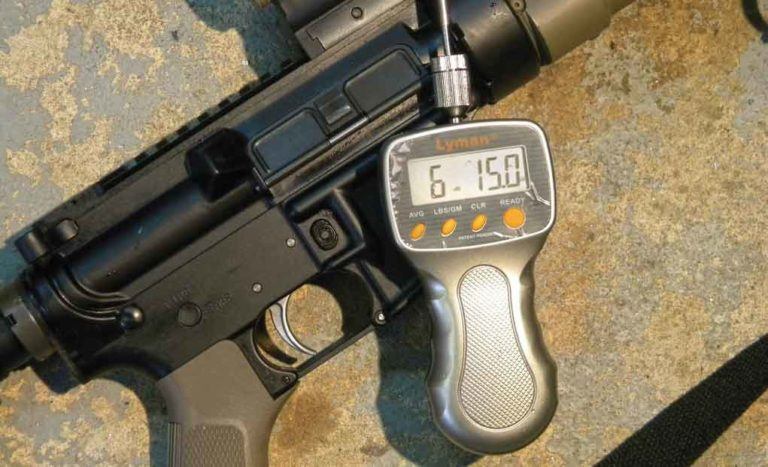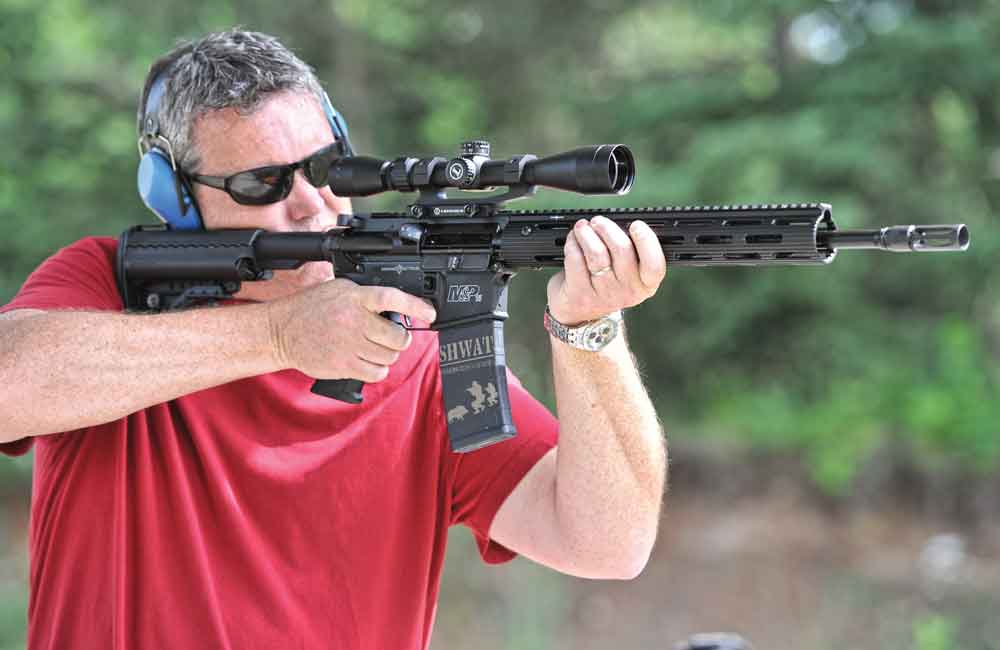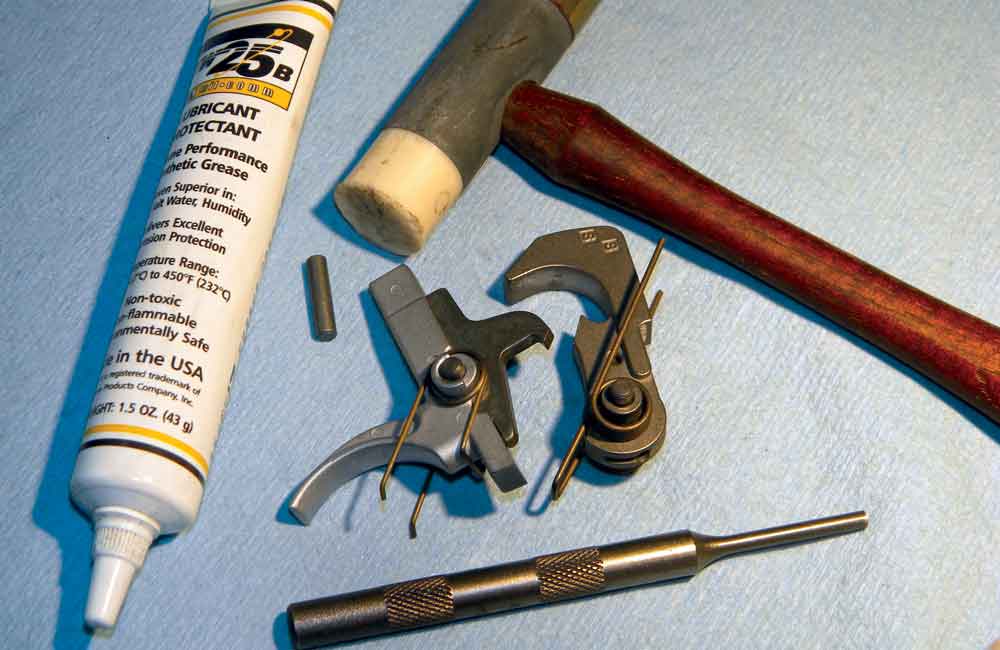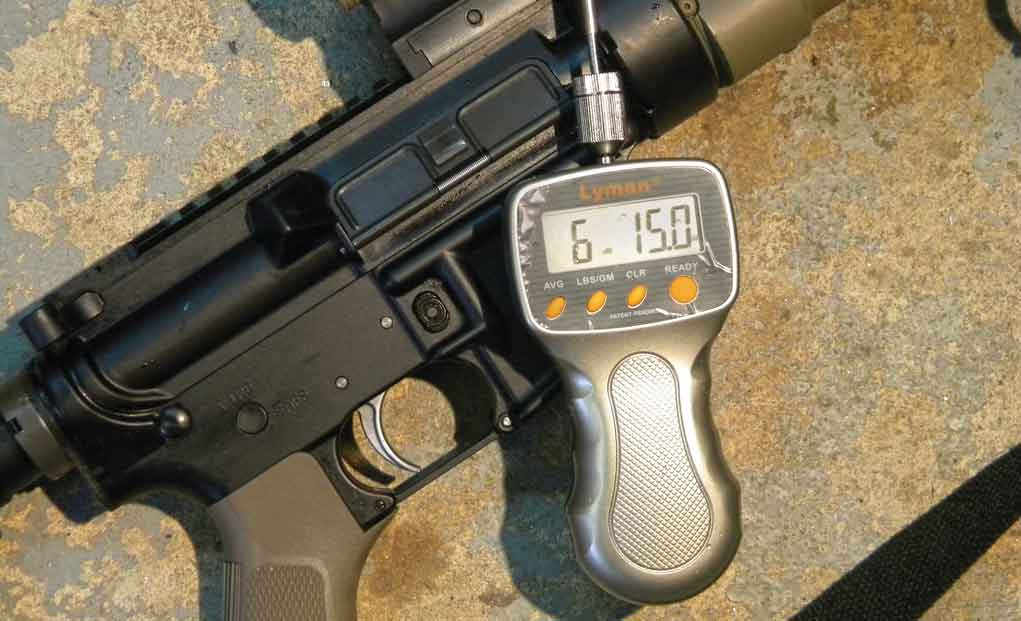
An AR trigger upgrade should be your first move if you’re looking to enhance the performance and accuracy of your stock rifle.
What sort of trigger do you need in your AR?
The AR is a great firearm. It can be used for almost anything. There are plenty of aftermarket parts to work with, so you can custom configure it to fit any particular application. One of the first areas you should address is the AR trigger group. Regardless of the application of your gun, a good trigger will make getting accurate hits easier.

The typical Mil-Spec AR trigger is pretty rough. It feels gritty. As you press it, it catches and grabs on the rough areas. However, one of the coolest features of the AR is its modular design. It’s simple to swap out various components, often without any special tools. There is no “fitting” required to swap out the AR trigger. As long as your receiver is within spec — which most are — all that’s required is to remove the old parts and install the new. And if you’re not sure about what you’re doing, have a qualified gunsmith address this for you.
Do not, under any conditions, modify the stock AR trigger components. These parts are heat treated, but only on their very surface. Polishing/grinding or removing material will take off the hard surface, leading to rapid wear on these areas. It might work great initially, but you’ll soon experience double-taps, which are shots fired as you reset or release. Sometimes, the result is full-auto fire. Modifying the factory components is dangerous.
Luckily, you don’t have to rework anything. There is a host of aftermarket companies offering great triggers for the AR. Once you decide what you’re going to do with the AR, you can then select the appropriate one.
Match vs. Defensive AR Triggers
The first decision to make is between a competition trigger for matches or a one for defensive and patrol use. Match or competition triggers are usually highly modified, varying in shape and weight significantly from the original designs. Some are adjustable. They have a very smooth action, and normally a greatly reduced pull — the amount of pressure required to drop the hammer. A lightweight AR trigger is fine on the range, or for a rifle set up for specific applications, such as a “special purpose rifle” for hunting or sniping. They are not for defensive or patrol use.
A match or competition trigger should not be used for defensive or patrol work. Under stress you lose dexterity in the fingers. During a violent confrontation, you’ll be moving, using different firing positions and fighting. An AR trigger that’s too light leads to negligent or unintentional shots fired. We see this occur during drills on the range, which means it will definitely be a problem under stress when lives are on the line.

A light trigger can be a legal liability. “Common custom and practice” is the key phrase. For the AR, this means a trigger of at least 4.5 pounds or more. Going with one that’s lighter than what is accepted for the purpose has been a major factor in court cases. Mas Ayoob discusses this in his classes, citing a few court cases where “hair” triggers were major factors.
In Ayoob’s first case as an expert witness, Florida v. Luis, the light trigger was critical to the manslaughter charge against Alvarez, a police officer. In Santibanes v. Tomball, the lawsuit “alleged negligence because the officer had created, ‘with the best of intentions,’ a trigger pull lighter than the gun’s manufacturer specs for ‘duty/self-defense use.’” Although these cases involved handguns, the same can be applied to the AR.
If you’ve been following along with this column, or if you’ve been around ARs for a while, you know gear selection is dictated by the anticipated use of your rifle or carbine. This consideration is also mandatory when selecting an AR trigger. The wrong trigger can lead to embarrassing or tragic results. With the right one, however, the AR will do anything you need.
Single- vs. Two-Stage AR Trigger
You’ll also need to decide between a single- or two-stage trigger. The single-stage trigger requires one smooth press, from beginning to end, to fire the shot. You start pressing and, at some point, the shot fires.
A two-stage trigger has two phases. As you press and take out the first stage, you hit a “wall,” which is a distinct point where you start to feel increased resistance. This is where the second stage starts. Apply a little more pressure, and the shot fires. This provides a break point you can feel; you know when the shot is about to fire. For newer shooters, this can cause a flinch, tensing up in anticipation of the shot that’s coming. For an accomplished shooter, this can be an advantage: You’re able to fire the shot exactly when you want.
Drop-In vs. Standard Configuration
Today you have the choice between a drop-in AR trigger group and a “standard” group. Drop-in trigger groups are self-contained units pre-assembled within a housing. You remove the old parts, slip in the new group and install the pins to retain it.
The standard parts are just like the Mil-Spec originals. There are separate components that you assemble inside the receiver. Both types work very well, although the drop-in variety have started to gain popularity, especially with competitive shooters.
For competition triggers, or a “special purpose rifle” for surgical shooting, I recommend Geissele or Timney. Geissele offers several designs for the AR, featuring standard-type components to install. Timney specializes in drop-in units.

For general-purpose or defensive AR trigger assemblies, I highly recommend ALG’s ACT trigger group. This group comes with all the parts needed — trigger, hammer, disconnector, springs and pins — to install in the AR. The ALG parts are Mil-Spec in size and shape, but they have polished and coated surfaces that provide a smooth action and crisp break. The group comes with two hammer springs: One provides a 4.5-pound trigger pull, and the other a 6-pound pull. This is a great trigger, especially considering the price, which is about $70.
Before you go out and spend a lot of money on a trigger for your AR, research and study not only what’s available, but also determine how you will use your gun. Go to the range and ask other shooters what they use. Whenever possible, test fire them. Eventually, you’ll discover what one best suits your purposes. Once you’ve got it installed, then work dry fire to learn the trigger, and live fire to check your results. While a good trigger won’t make up for insufficient skills, it will make it easier to get consistently accurate hits.
Editor's Note: The article is from the September 2017 Gun Digest the Magazine.

Next Step: Get your FREE Printable Target Pack
Enhance your shooting precision with our 62 MOA Targets, perfect for rifles and handguns. Crafted in collaboration with Storm Tactical for accuracy and versatility.
Subscribe to the Gun Digest email newsletter and get your downloadable target pack sent straight to your inbox. Stay updated with the latest firearms info in the industry.

![Best Concealed Carry Guns In 2025 [Field Tested] Wilson Combat EDC X9S 1](https://gundigest.com/wp-content/uploads/Wilson-Combat-EDC-X9S-1-324x160.jpg)


![Best 9mm Carbine: Affordable PCCs [Tested] Ruger Carbine Shooting](https://gundigest.com/wp-content/uploads/Ruger-Carbine-Shooting-100x70.jpg)
![Best AR-15: Top Options Available Today [Field Tested] Harrington and Richardson PSA XM177E2 feature](https://gundigest.com/wp-content/uploads/Harrington-and-Richardson-PSA-XM177E2-feature-100x70.jpg)
